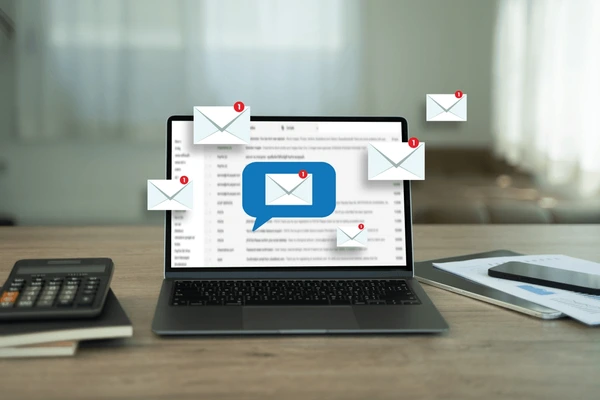In the digital age, businesses are constantly looking for ways to expand their reach and grow their customer base. One of the most debated strategies is purchasing a business email contact list. While this approach can provide instant access to potential leads, it comes with inherent risks and challenges. This article explores the advantages, disadvantages, and best practices for using a purchased email list, helping businesses make informed decisions.
What is a Business Email Contact List?
A business email contact list is a collection of email addresses belonging to professionals and companies that can be used for marketing and sales outreach. These lists are often sold by data brokers, lead generation companies, or marketing agencies. They may contain details such as company names, job titles, industries, and contact information.
While these lists promise quick access to a targeted audience, their effectiveness and ethical implications remain contentious.
Advantages of Buying a Business Email Contact List
1. Instant Lead Acquisition
One of the biggest benefits of purchasing an email list is the ability to acquire leads instantly. Instead of spending months gathering contact details organically, businesses can gain immediate access to thousands of potential clients.
2. Cost-Effective Marketing
Compared to running expensive advertising campaigns or hosting events, buying an email list is often seen as a cost-effective way to reach a large audience.
3. Accelerates Market Entry
For businesses looking to enter new markets or industries, an email list can serve as a stepping stone. It allows companies to introduce themselves quickly without starting from scratch.
4. Increases Brand Awareness
A well-crafted email campaign using a purchased list can help build brand awareness by exposing your business to a broader audience. Even if immediate conversions don’t happen, recipients become familiar with your brand.
Risks and Challenges
1. Legal and Compliance Issues
Many countries have strict regulations regarding email marketing, such as the GDPR (General Data Protection Regulation) in Europe and the CAN-SPAM Act in the United States. Sending unsolicited emails without consent can lead to legal consequences and heavy fines.
2. Low Engagement and Deliverability Rates
Since recipients did not opt to receive emails from your company, there’s a high chance they will ignore, delete, or mark your messages as spam. This can negatively impact your sender reputation and email deliverability.
3. Risk of Spam Complaints
Unsolicited emails often lead to spam complaints. If too many recipients mark your emails as spam, your email provider may block your campaigns or suspend your account.
4. Data Quality Concerns
Not all purchased lists are accurate or up-to-date. Some may contain outdated email addresses, incorrect information, or even fake contacts. This can lead to wasted resources and a poor return on investment.
5. Potential Damage to Brand Reputation
Sending emails to an unverified list can harm your brand’s credibility. Customers who receive unwanted messages may view your company as intrusive or untrustworthy.
Best Practices for Buying and Using Email Lists
If you decide to purchase an email list, follow these best practices to mitigate risks and enhance its effectiveness.
1. Choose a Reputable Vendor
Not all data providers are equal. Look for vendors who offer high-quality, verified lists that comply with data protection regulations.
2. Verify and Clean the List
Before launching a campaign, use email verification tools to remove invalid or inactive email addresses. This improves deliverability and reduces bounce rates.
3. Segment Your Audience
Segment the list based on criteria such as industry, job title, company size, and location. This allows for more personalized and targeted messaging.
4. Use a Warm-Up Strategy
Instead of sending bulk emails immediately, introduce your brand gradually. Start with a soft-touch email offering value, such as an industry report or a free resource, before making a sales pitch.
5. Ensure Compliance with Regulations
Include an opt-out link in your emails, respect unsubscribe requests, and avoid misleading subject lines to stay compliant with email marketing laws.
6. Focus on Providing Value
Rather than pushing a hard sell, offer valuable content, insights, or solutions that address your audience’s pain points. This approach increases engagement and builds trust.
7. Monitor Performance Metrics
Track open rates, click-through rates, bounce rates, and spam complaints. Use this data to refine your approach and improve future campaigns.
Alternatives to Buying an Email List
While buying an email list can be tempting, businesses should consider alternative methods for building a high-quality contact list.
1. Organic Lead Generation
Create valuable content, host webinars, and engage in social media marketing to attract potential customers who willingly share their contact information.
2. Networking and Partnerships
Attend industry events, join professional groups, and collaborate with partners to grow your contact base naturally.
3. Website Lead Capture Forms
Use lead magnets such as e-books, free trials, or exclusive content to encourage website visitors to subscribe to your email list.
4. Referral Programs
Encourage existing customers to refer others in exchange for incentives or discounts.
Final Thoughts
Buying a business email contact list can be a double-edged sword. While it offers a quick way to reach potential customers, it carries significant risks, including legal compliance issues, low engagement rates, and damage to brand reputation. Businesses should weigh the pros and cons carefully and implement best practices if they choose this approach.
However, for long-term success, organic lead generation methods are often more sustainable and effective. By focusing on building relationships, providing valuable content, and maintaining ethical marketing practices, businesses can develop a strong and engaged email subscriber base that drives real growth.











Leave a Reply